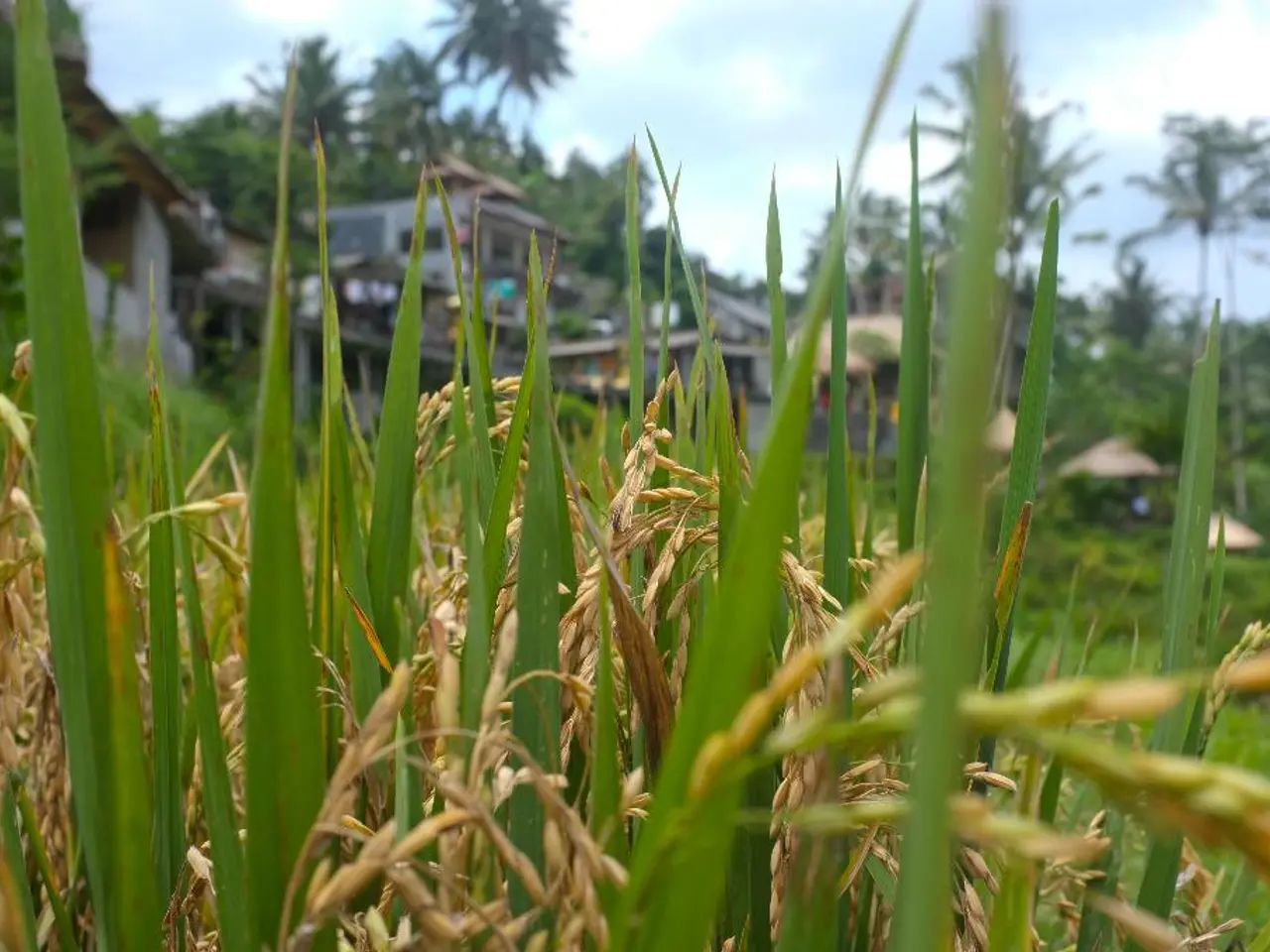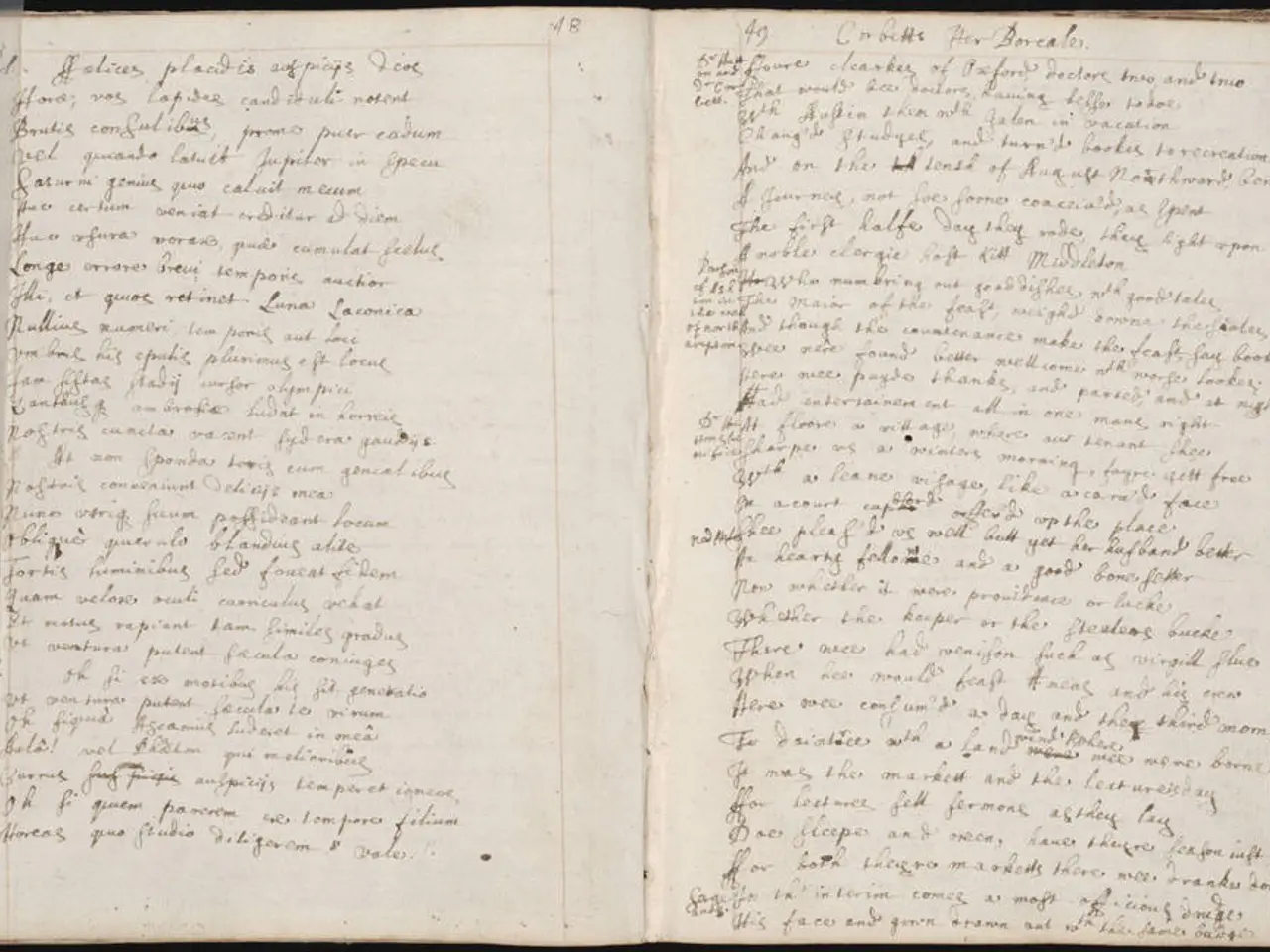Rain bypasses Kurigram, drought looms over Aman farming
In the heart of Bangladesh, farmers in Kurigram are facing a severe challenge as the monsoon rains have missed the area, leading to a deepening drought that is threatening the Aman rice season [1][2]. This critical agricultural period is crucial for the country's rice production and the livelihoods of local farmers.
The dryness and insufficient rainfall have made it impossible for farmers to till their land, a crucial step for Aman rice cultivation [1][2]. The drought has put the Aman cultivation target of 11,350 hectares in Kurigram's Fulbari upazila at risk, with delayed or reduced planting [1].
The lack of rain has also caused difficulties in seedling transplantation and early crop growth due to water scarcity [1]. The situation has resulted in a severe disruption of the Aman farming cycle, threatening the overall rice production and the livelihoods of farmers in the region [1][2][5].
Local farmers in Fulbari are expressing their distress due to the drought. Abul Kashem from Kurushaperusha village stated that the earth has cracked open, and they couldn't plough the land yet due to the lack of rain [1]. Shailan Chandra Roy, a neighbour of Abul Kashem, echoed the same concern about the current situation in Fulbari [1].
Frustration among farmers in Gojerkuti and Balatari villages is high due to the lack of rain [1]. In other parts of Fulbari, such as Bhanga Mor and Kashipur, farmers are grappling with similar challenges due to the drought [1].
A field visit by the UNB correspondent revealed vast tracts of fallow, cracked, and sun-scorched land in Fulbari [1]. The situation has become so dire that farmers may have to rely entirely on shallow pumps and irrigation, which will significantly raise their production costs [1].
However, there is hope. Subol Chandra Sarker, Acting Officer at the Rajarhat Agricultural Weather Office, predicts little or no heavy rainfall until at least July 13 or 14 [1]. Fulbari Upazila Agriculture Officer Mosammat Nilufa Yasmin hopes significant rainfall in the coming days could still allow farmers to meet the Aman cultivation target [1].
In the meantime, if rainfall continues to elude the region, the agriculture department will support farmers with technical advice and assistance in using shallow machines and irrigation systems [1].
References: [1] UNB News Agency. (2023). Drought threatens Aman rice cultivation in Kurigram. Retrieved from https://www.unb.com.bd/news/2023/06/29/drought-threatens-aman-rice-cultivation-in-kurigram [2] The Daily Star. (2023). Kurigram farmers face drought, struggle to plant Aman rice. Retrieved from https://www.thedailystar.net/news/agriculture/kurigram-farmers-face-drought-struggle-plant-aman-rice-22062023 [3] The Financial Express. (2023). Drought threatens Aman rice cultivation in Kurigram. Retrieved from https://www.thefinancialexpress.com.bd/bangladesh/drought-threatens-aman-rice-cultivation-in-kurigram-1593563496 [4] The Bangladesh Post. (2023). Kurigram farmers struggle with drought during Aman rice season. Retrieved from https://www.thebangladeshpost.net/kurigram-farmers-struggle-with-drought-during-aman-rice-season-164902 [5] The Independent. (2023). Kurigram farmers face drought, struggle to plant Aman rice. Retrieved from https://www.theindependentbd.com/news/kurigram-farmers-face-drought-struggle-to-plant-aman-rice-164902
- The dry weather conditions have made weather-forecasting critical, as farmers in Kurigram are hoping for rain to help with Aman rice cultivation and avert further losses to their crops and livelihoods.
- The environmental science behind the current climate-change situation highlights the importance of monitoring weather patterns and their effects on agricultural practices, such as the Aman rice season, to ensure sustainable food production in regions like Kurigram.








